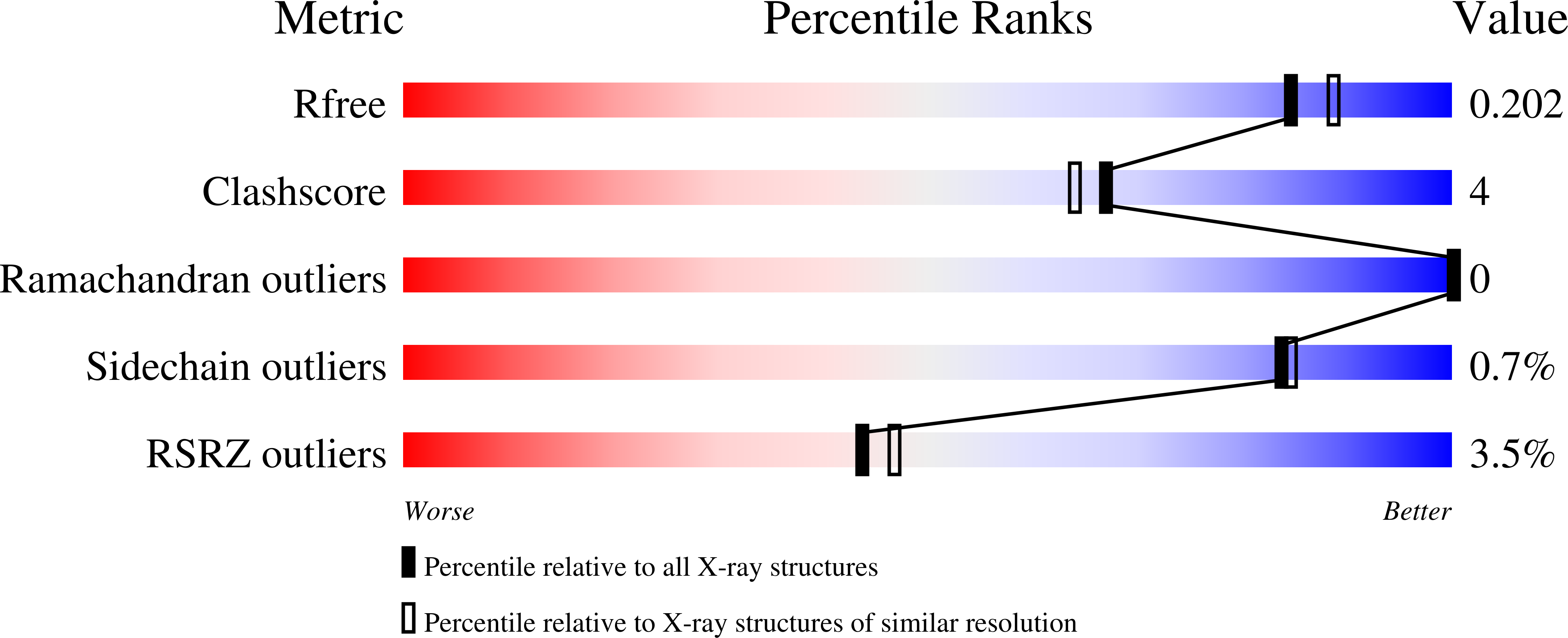IscS from Archaeoglobus fulgidus has no desulfurase activity but may provide a cysteine ligand for [Fe2S2] cluster assembly.
Pagnier, A., Nicolet, Y., Fontecilla-Camps, J.C.(2015) Biochim Biophys Acta 1853: 1457-1463
- PubMed: 25447670
- DOI: https://doi.org/10.1016/j.bbamcr.2014.10.015
- Primary Citation of Related Structures:
4R5F - PubMed Abstract:
Iron sulfur ([Fe-S]) clusters are essential prosthetic groups involved in fundamental cell processes such as gene expression regulation, electron transfer and Lewis acid base chemistry. Central components of their biogenesis are pyridoxal-5'-phosphate (PLP) dependent l-cysteine desulfurases, which provide the necessary S atoms for [Fe-S] cluster assembly. The archaeon Archaeoglobus fulgidus (Af) has two ORFs, which although annotated as l-cysteine desulfurases of the ISC type (IscS), lack the essential Lys residue (K199 in Af) that forms a Schiff base with PLP. We have previously determined the structure of an Af(IscU-D35A-IscS)2 complex heterologously expressed in Escherichia coli and found it to contain a [Fe2S2] cluster. In order to understand the origin of sulfide in that structure we have performed a series of functional tests using wild type and mutated forms of AfIscS. In addition, we have determined the crystal structure of an AfIscS-D199K mutant. From these studies we conclude that: i) AfIscS has no desulfurase activity; ii) in our in vitro [Fe2S2] cluster assembly experiments, sulfide ions are non-enzymatically generated by a mixture of iron, l-cysteine and PLP and iii) the physiological role of AfIscS may be to provide a cysteine ligand to the nascent cluster as observed in the [Fe2S2]-Af(IscU-D35A-IscS)2 complex. This article is part of a Special Issue entitled: Fe/S proteins: Analysis, structure, function, biogenesis and diseases.
Organizational Affiliation:
Univ. Grenoble Alpes, IBS, F-38044 Grenoble, France; CNRS, IBS, F-38044 Grenoble, France; CEA, IBS, F-38044 Grenoble, France.























